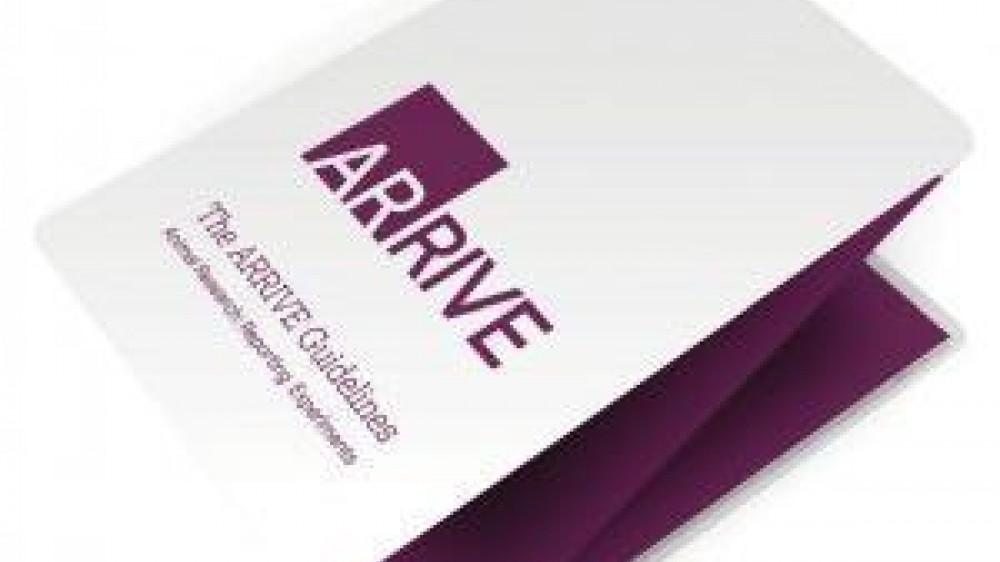ARRIVE at five

The ARRIVE guidelines were launched in 2010, and since their publication the scientific community have been using the guidelines to improve the reporting of animal research.
Figures published today in Nature reflect the growing support from journals; see Nature Trend Watch ‘Surge in support for animal-research guidelines’. With over 65,000 views of the original article published in PLOS Biology and 1,000 citations, the ARRIVE guidelines have steadily gained momentum over the past five years and are now recognised internationally as key reporting guidelines for animal research.
The early years
ARRIVE was developed as a consensus between an NC3Rs expert working group comprising of scientists, statisticians, journal editors and funders. The scope for developing reporting guidelines for animal research stemmed from previous work conducted by the NC3Rs which showed that key information was missing from studies. The resulting 20-item checklist was published in 2010 in PLOS Biology, with five other journals making the bold move to be amongst the first to endorse the guidelines. The first step in the road to improving reporting of animal research was to raise awareness of the guidelines and seek further endorsement, which remained our approach for the early years. As more and more researchers and journals started to realise the need for reporting guidelines, ARRIVE started to gain momentum.
The growing years
From 2011 onwards we continued to engage with journals and increase endorsement. Last year was our biggest yet, with over 150 new journals signing up to the guidelines. The total number of journals who now endorse ARRIVE stands at over 600. Endorsement means that they have incorporated the guidelines into their Instructions for Authors, and encouraged authors, reviewers and editors to use the guidelines when preparing and reviewing manuscripts.
As support for ARRIVE has grown, so has the range of organisations endorsing the guidelines. The major bioscience research funders in the UK make reporting studies in compliance with ARRIVE a condition of grant funding. In 2013 we launched a call to universities to encourage institutes to embed the guidelines in research and training, resulting in the majority of research intensive universities in the UK signing up. The variety of scientific organisations using the guidelines continues to broaden as the principles of ARRIVE are embraced in novel ways; the International Mouse Phenotyping Consortium (IMPC) recently applied the guidelines to their in vivo database to ensure transparency and reproducibility.
Beyond this, we have focused on encouraging the wider international scientific community to endorse ARRIVE. With the help of translations (five languages available with more in the pipeline) we have been disseminating the guidelines across the globe. We send hard copies of the guidelines in a fold out format upon request, and since 2013 we have sent over 10,000 copies to 30 different countries. The ARRIVE pages on our website have attracted visitors from 110 different countries and provides researchers with resources to use the guidelines. We are starting to engage with universities and funders overseas and calling upon organisations outside of the UK to endorse the guidelines; if you would like further information about how your organisation can endorse the ARRIVE guidelines, please contact us enquiries@nc3rs.org.uk.
The next chapter
Endorsement of the ARRIVE guidelines has helped to raise awareness of the quality of reporting and has led us into the next chapter of ARRIVE. The landscape has changed significantly since the publication of the guidelines in 2010, and with a growing body of evidence showing poor quality of reporting in animal studies, there is increasing demand to ensure adherence to reporting guidelines. We are currently co-funding a research project to assess the impact of implementing the ARRIVE checklist on the quality of reporting in published manuscripts. The results of this study will help us to shape the future direction of the ARRIVE guidelines as they evolve into their next chapter.
A full list of organisations endorsing ARRIVE can be found here.
If you are interested in finding out more about the ARRIVE guidelines, Dr Katie Lidster presented a webinar at the Laboratory Animal Science (LAS) virtual conference on 4 February 2016.
